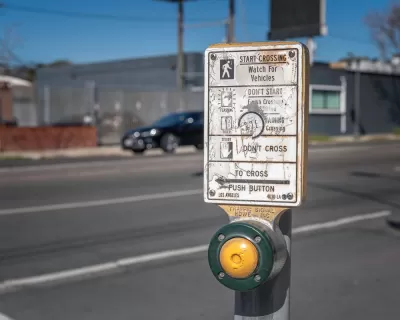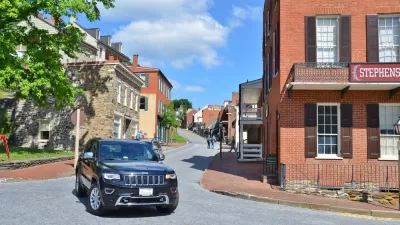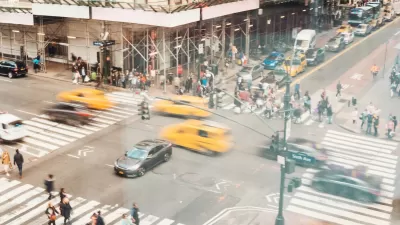Communities of color have significantly higher rates of traffic fatalities, according to federal research.

New federal data from the National Highway Traffic Safety Administration (NHTSA) reveals “significant disparities” in traffic fatalities between racial and ethnic groups in the United States, according to an article by Dan Rosenbaum in Smart Cities Dive.
Research undertaken in 2022, the first of its kind to examine “traffic safety in the context of race and ethnicity,” found that traffic deaths per 100,000 varied from 10.92 for White people to 24.75 for American Indian or Alaska Native people. Pedestrian deaths showed even stronger disparities: “In 2018, the pedestrian fatality rate for American Indian or Alaska Native people was 3.42 times the rate for White people; for Black people, it was 1.97 times the rate for White people. Asian pedestrians died at slightly more than half the rate of White pedestrians.”
The NHTSA did not offer an answer for why these disparities exist, but infrastructure—or the lack thereof in historically disinvested neighborhoods—could be a factor.
Shannon Hughes, a deputy regional administrator for NHTSA, said reducing traffic fatalities starts with a “safe system approach” that acknowledges the potential for human error and focuses on safe infrastructure that minimizes risk for all road users. “DOT’s safe system approach calls not just for safer drivers and pedestrians, but for safer road and vehicle design, reduced speeds and better post-crash care.”
FULL STORY: Racial and ethnic disparities in traffic deaths revealed in NHTSA report

Maui's Vacation Rental Debate Turns Ugly
Verbal attacks, misinformation campaigns and fistfights plague a high-stakes debate to convert thousands of vacation rentals into long-term housing.

Planetizen Federal Action Tracker
A weekly monitor of how Trump’s orders and actions are impacting planners and planning in America.

Chicago’s Ghost Rails
Just beneath the surface of the modern city lie the remnants of its expansive early 20th-century streetcar system.

Bend, Oregon Zoning Reforms Prioritize Small-Scale Housing
The city altered its zoning code to allow multi-family housing and eliminated parking mandates citywide.

Amtrak Cutting Jobs, Funding to High-Speed Rail
The agency plans to cut 10 percent of its workforce and has confirmed it will not fund new high-speed rail projects.

LA Denies Basic Services to Unhoused Residents
The city has repeatedly failed to respond to requests for trash pickup at encampment sites, and eliminated a program that provided mobile showers and toilets.
Urban Design for Planners 1: Software Tools
This six-course series explores essential urban design concepts using open source software and equips planners with the tools they need to participate fully in the urban design process.
Planning for Universal Design
Learn the tools for implementing Universal Design in planning regulations.
planning NEXT
Appalachian Highlands Housing Partners
Mpact (founded as Rail~Volution)
City of Camden Redevelopment Agency
City of Astoria
City of Portland
City of Laramie





























